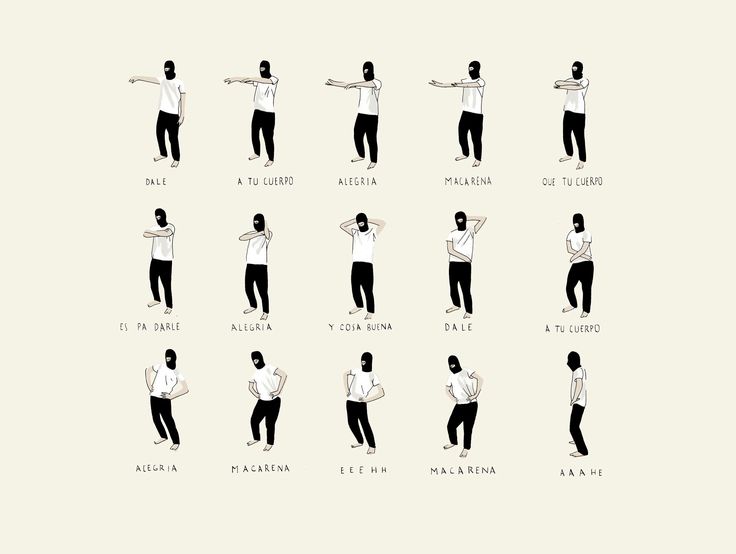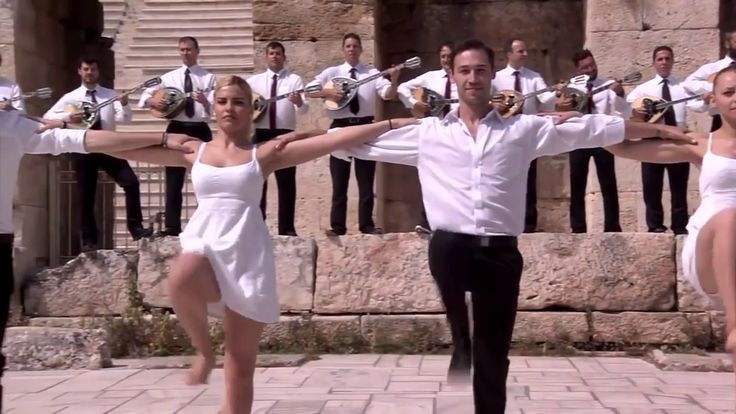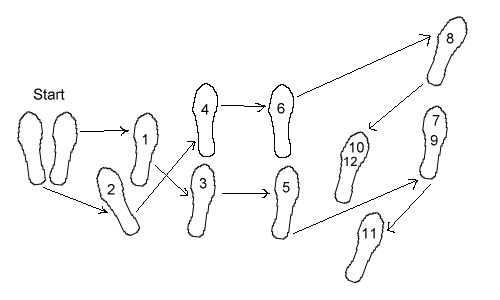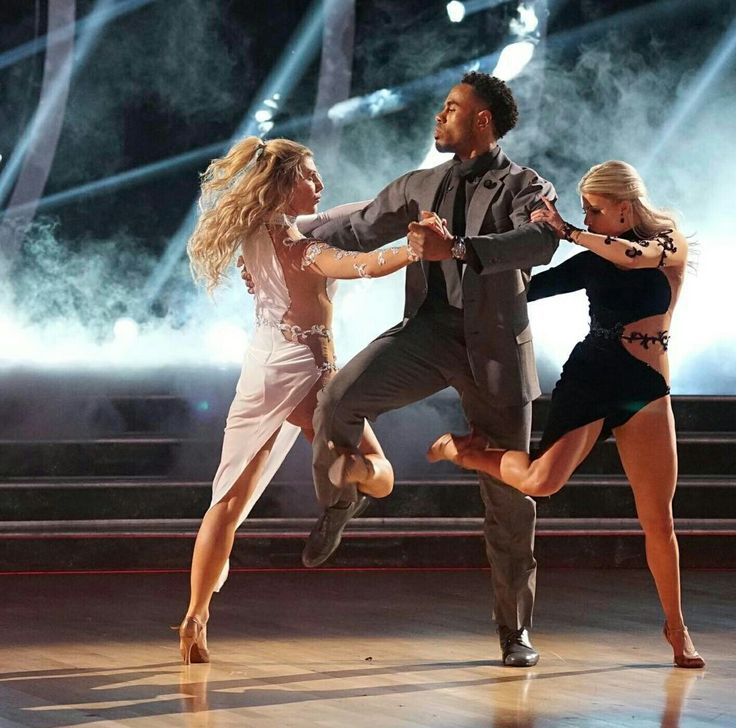How to greek dance
|
|
||||||||||||||||||||||
|
How to Greek Dance by The Guys @ DCGreeks. Remember when you were little and your parents or your Greek School teacher would tell you to learn how to Greek Dance and you'd never listened, thinking to yourself, "Greek dancing's stupid. Why would I ever want to go around and around and around in circles like that?" Now flash forward to your early twenties when you suddenly found yourself not knowing a zembekiko from a zebra. When this happened, you had three options; either you learned how to Greek Dance, you found something else to compensate for your lack of knowledge of Greek Dancing, or you just accepted the fact that you'd never find that Greek girl/guy of your dreams because you couldn't count out 1-2-3-kick without moving your lips. It's like your mama always said, "Greek girls/guys won't give you the time of day if you can't Greek dance." Maybe your mama was over- exaggerating, but in any event, if you fear that the Kalamatiano of life is passing you by, don't worry, because we present to you, How to Greek Dance, How to Fake It, or How to Get by Without It! Knowing Greek Dancing, or at least being able to fake your way through it, is important because the few occasions you'll have throughout the year where there will be a lot of Greek people, especially Greek people you've never met before, will involve Greek dancing.
So you've gotten in a Greek dance line, what do you do? Stick to the basics. In DC, the basics are Kalamatiano, Tsamiko and Hasaposerviko. If you're a beginner, try if at all possible to get to the middle of a line.
Also avoid the very end of the line -- you just look like a complete tool with your arm all flailing about unconnected; it's also the easiest place for someone you wouldn't want to be dancing with to latch on in the middle of a song. If you've gotten to the middle of a line, then basically just follow along and make sure at the very least that you're going in the same direction as the rest of the line. Now if you've been paying attention, you'll notice that we've strictly been talking about Greek line-dancing to this point. There are two main dances that aren't in a line, the zembekiko, tailored to the fellas, and the tsifteteli, a chance for the ladies to show off their moves. If you're a guy and a zembekiko is playing and you're not very good, this might be a chance to go get a drink. Come back toward the end of the song and then plop down on one knee and start clapping for the other guy who will be surrounded by the rest of the girls and the guys who have already been up. Like playing spin the bottle at your Greek cousin's house, hopefully your turn won't come around. The guy's part during a tsifteteli is easy -- just sit there and clap or snap your fingers approvingly as the girl you're dancing with/staring at goes to work. So you've read our helpful hints, you've followed our easy to follow instructions, but you still can't Greek dance, then what? If you're a guy, make up an injury. Remind girls of the time you scored 40 in a GOYA basketball game and blew out your knee on the game winning shot. Actually we knew guys back in the day who were with really great Greek girls whose athletic ability and time in the gym more than made up for their lack of coordination on the dance floor. If you're not the largest guy in the world, consider buying a new car -- General Motors is currently offering 0.0% APR for 36 months on all new cars, so there's no better time to buy. If you're a girl and you can't Greek dance, don't worry, because they'll be plenty of guys on the sidelines who can't or won't Greek dance and will be happy that you don't equate a guy's Greek dancing ability with the size of his tsarouhia. Read past feature articles.
Share
|
Learn An Easy Greek Traditional Dance!
Ancient Greeks believed that dance is the gift of the Gods to humanity.
Contemporary folk dances date all the way back to Ancient Greece and are thus often referenced by authors like Plato, Aristotle and Plutarch.
It is summer, and we are in the mood to dance…However, in outdoor non-crowded places, and without holding hands, due to the ongoing Covid situation..
Τι να κάνουμε!
Greece has a very wide spectrum of folk dances that vary from one place to another; there is no specific number, but experts suggest that there are more than 4000 of them.
Quite an impressive number considering the size of the country! The dances are informed by each location’s traditions mentality beliefs and history – may that be mainland Greece or one of its numerous islands.
Traditional Greek dances have a primarily social function. They bring local communities together; they are the highlight of key annual celebrations such as Easter celebrations and
summer festivals as well as important moments in people’s personal lives such as weddings, birthdays, etc.
It’s quite common for modern Greeks to learn at least a few traditional dances as children or teenagers either at school or at independent dance schools since it is seen as a way to
pass the traditions from one generation to another.
Most of the Greek traditional dances, are not so difficult to learn, and you do not need to be athletic or a dancing type in order to learn the steps.
However, for foreigners, it is often more complicated than it looks, due to the different rhythms in the music, than we are used to in other European countries.
So you often need to get used to the rythm first, before your feet will follow your mind 🙂
One of the easiest dances to learn for foreigners, is the “xasaposervikos”, since it has a simple rhythm, very close to music Europeans or North Americans are used to in their countries.
Α small introduction to the “xasaposervikos” dance:
Xasaposercikos, also called hasaposervikos or servikos, is a traditional Greek dance with simple basic steps that are repeated throughout the song.
As a result, it’s good for beginners, but do not be fooled – it’s a quick one!
The tempo of the dance is 2/4 and it has been influenced by the music traditions of other Balkan countries and Eastern Europe, such as Serbia, Romania and Bulgaria.
“Servikos” is the Greek word for Serbian after all.
People of all these nationalities would travel from one big urban center to another as well as to the coast for Asia Minor for professional purposes.
Wandering musicians, many of them being Gypsies, would also travel to these places and they would experiment with the different music and dances of the areas they visited. In Greece, hasaposerviko bloomed
In Greece, hasaposerviko bloomed
and became more defined under the influence of rebetiko music.
The dancers hold on to each other in a shoulder-hold and, starting with the right foot, they make three steps to the right. Then, they kick the left foot forward, step down to the left and kick out with the right foot.
Below some songs that are a good indication of hasaposervikos music and tempo:
• Είμαστε Αλάνια
• Είμαι Ερωτευμένος με τα Μάτια Σου
• Στην Σκέψη της Τρελή
Do you think it is difficult to dance?
Do not worry, you can do it as well! Take a look at the video below, where foreigners from every corner of the world, dance the xasapikoservikos 😉
Greek dances (part 2) - Moscow Society of Greeks
March 31, 2018 Dance is an opportunity to express your soul in plastic. Movements, postures of the performer tell about his feelings and experiences. Folk dance is the ancestor of all other types of this art. Each locality has its own rhythms, movements, postures, costumes, and so on. Greek dances in their homeland are so popular that they are danced even in discos. They are even taught to tourists who have come to rest. nine0004
Movements, postures of the performer tell about his feelings and experiences. Folk dance is the ancestor of all other types of this art. Each locality has its own rhythms, movements, postures, costumes, and so on. Greek dances in their homeland are so popular that they are danced even in discos. They are even taught to tourists who have come to rest. nine0004
Igor Semenikhin - Sirtaki
Greek dances
Let's get to know them better. Greek dances are popular not only among the representatives of this people themselves, but in many other countries they are danced with pleasure. Greek music and dance are studied in many European and American universities. And even performed live by ensembles using bouzouki . This is a Greek folk instrument, similar to a mandolin, which can be easily combined with any other: accordion, guitar, piano, and so on. Its sound is modest and languid. nine0004
In Greece, there was a huge number of dances - more than 200. They were divided into 5 groups: ritual, sacred (performed during the sacrifice), stage, domestic and civil (they were danced at public holidays). In ancient Greece, dance was considered a gift from the Gods, which combines spiritual and physical beauty. The muse of Terpsichore is designed to teach the soul and body to combine correctly with each other.
They were divided into 5 groups: ritual, sacred (performed during the sacrifice), stage, domestic and civil (they were danced at public holidays). In ancient Greece, dance was considered a gift from the Gods, which combines spiritual and physical beauty. The muse of Terpsichore is designed to teach the soul and body to combine correctly with each other.
Sirtaki (from the Greek συρτάκι - touch) is a popular dance created in 1964 for the film Zorba the Greek. It is not a Greek folk dance, but is a combination of slow and fast versions of hasapiko , an ancient warrior dance. The sirtaki dance, as well as the music for it, written by the Greek composer Mikis Theodorakis, is sometimes called the "Dance of the Zorba". The choreographer of the film and, in particular, the dance of Zorba and Basil in the final scene, was Yorgos Provias.
After the release of the film, Sirtaki became the most popular Greek dance in the world and one of the symbols of Greece. nine0004
nine0004
Sirtaki dance, standing in a line or, more rarely, standing in a circle, and putting their hands on the shoulders of their neighbors. The meter is 4/4, the tempo is increasing, and often in the fast part of the dance the meter changes to 2/4. Sirtaki begins with slow, smooth movements, gradually turning into faster and sharper ones, often including jumps and jumps.
Khasapiko (Greek χασάπικο; "butcher's dance") is a Greek folk dance that previously had ceremonial and applied significance and was performed as a military ritual. nine0004
According to the common version, the hasapiko is a military dance performed by selected units of warriors of the Byzantine era, called cassapides. The steps of the dance were very simple and consisted of the following: the warrior entered the battlefield and tried to destroy all the enemies. In other words, these "dancers" were chosen warriors who repeated their actions on the battlefield. These warriors danced the kassapiko at the festivals, and this distinguished them from other units. Then in the Greek language in the name of the dance one letter “s” left and “k” changed to “x”, and thus the dance of hasapiko appeared. The butcher in Turkish is “kasap”, and in Greek “makelarios”, thus in Greece the dance began to be called “makelarikos”. nine0004
A slower version of the dance is called "hasapiko heavy" (wari hasapiko) and is danced to a 4/4 rhythm. For the faster version, the rhythm is 2/4.
Zeibekiko - e This Greek folk dance originated in Ancient Thrace. Its name comes from the name of the soldiers - zembekid. Their descendants came to Greece after the disaster and brought with them this ancient ancestral dance. Only men performed zeibekikos. This is the only solo Greek dance known to the world. The steps in it are always built on improvisations. The performer has the opportunity to express himself. The zeibekikos dance in ancient times was accompanied by a demonstration of weapons. nine0004
Only men performed zeibekikos. This is the only solo Greek dance known to the world. The steps in it are always built on improvisations. The performer has the opportunity to express himself. The zeibekikos dance in ancient times was accompanied by a demonstration of weapons. nine0004
Kleftikos – partisan dance. It was used for recreation as well as for military training. The name comes from the word "klefty", that is, "partisans". This dance originated in ancient times - in the era when the Greeks were fighting with the Ottoman Empire.
Kalamathianos is one of the most popular in Greece. This is a type of sirtos. This dance was performed to songs. Most of them sang about the city of Kalamata, from which the name came. nine0004
Tsamikos - this dance has many variations. In different parts of Greece, it is performed in their own way. The movements of the dance, its style, form, spiritual component reflect the habits and characters of the inhabitants of each locality.
In different parts of Greece, it is performed in their own way. The movements of the dance, its style, form, spiritual component reflect the habits and characters of the inhabitants of each locality.
To be continued…
greekmos 2019-10-31T13:02:30+03:00Greek dance: the joy of movement - Greece today
Added: August 20, 2013 20:31
Dance is one of the oldest means of expression: in Greece, its origins go back to 1000 BC. e. Dance owes its origin to the need to express those feelings that cannot be expressed in words. It is inextricably linked with all aspects of human life: holidays, love, work, and even death. Dance is the voice of the soul, expressed by the movements of the body; it helps us express our personality, stimulates creativity and liberates. nine0005
Dance is not just a game, it is a ritual, which is one of the most vital aspects of the cultural wealth of any nation, a source of inspiration and creativity. Traditional dances are closely intertwined with the manners and customs of the Greeks. Folk Greek dances are exceptionally varied. They are divided into different categories depending on the purpose (love, military and religious), on gender (male, female and mixed), on the region (folk, local, island). In addition, dances are divided into fast, consisting of bouncing, and slow, with calm smooth movements. nine0005
Folk Greek dances are exceptionally varied. They are divided into different categories depending on the purpose (love, military and religious), on gender (male, female and mixed), on the region (folk, local, island). In addition, dances are divided into fast, consisting of bouncing, and slow, with calm smooth movements. nine0005
For more than 7 years, the Greek Cultural Center (GCC) has been successfully operating the School of Greek Dance, where everyone is given a unique opportunity to get acquainted with the rich musical and dance traditions of Greece and learn how to dance the most popular national dances from different regions of the country. The repertoire of the GCC Dance Company includes more than fifty (50) dances from mainland and island Greece.
The purpose of the School is teaching based on the philosophy of movement, developing creativity and allowing a deeper understanding of the history of Greek dance. Fast, high-quality and effective training takes place in a warm and friendly environment and is designed for people of all ages. In addition to introducing students to Greek traditions, dance lessons aim to develop psychomotor abilities, aesthetic education and improve social communication skills. Dancing helps to reduce stress, develop a sense of rhythm, tone the muscular system, give movements plasticity and grace, and increase physical endurance. nine0005
In addition to introducing students to Greek traditions, dance lessons aim to develop psychomotor abilities, aesthetic education and improve social communication skills. Dancing helps to reduce stress, develop a sense of rhythm, tone the muscular system, give movements plasticity and grace, and increase physical endurance. nine0005
The ancient Greeks believed that dance is a gift from the gods to man, which makes it possible to forget all sorrows and make life more beautiful, filling it with joy and fun. This delightful art was revered by the ancient peoples throughout Hellas. And today, the art of dance, which has not lost its value, remains loved by many people. Dance ennobles our life and takes us to a beautiful mythical world, we just have to approach it with respect and love.
A few words about the most popular Greek dances. nine0005
Zeybekiko is a dance whose name comes from the Zeybeks, a people who inhabited Thrace. These people kept their customs and wore national costumes, emphasizing the purpose of severe military dances. The peculiarity of zeibekiko is that this dance is performed by one person; there are no steps in it, and its main figures are turns and squats. The dance is mostly performed by men, and it expresses melancholy and sadness.
It is customary to dance Hasapiko, standing in one line and placing hands on the shoulders of neighbors. In this case, the steps alternate with figures. This dance served as the basis for the creation of the famous Greek dance sirtaki. According to one version, the history of the hasapiko dates back to the Byzantine period, when this military dance depicted a sword fight; according to another version, the dance owes its appearance to Greek butchers from Constantinople. nine0005
Kalamatianos is a folk dance belonging to the category of sirtos dances. It consists of 12 basic steps: the first seven are forward, and the remaining five are in place. This popular dance originated in the Peloponnese. Thanks to its pleasant rhythm and relatively simple steps, it is danced with pleasure by men and women throughout Greece.
 Greek dancing may be your only opportunity to meet that girl or guy that you'd never be able to get a chance to talk to in any other circumstance because you'd have to get through the girl's cousins or the guy's parea that normally encircle them. Greek dancing is a free-for-all experience where you can suddenly find yourself in line next to girl/guy of your dreams either on purpose or completely by accident. How you end up there usually depends on if you're a guy or a girl. If you're a guy you find a way to get into a line next to that girl which sometimes involves more line transfers than your morning Metro ride. If you're a girl, you're dragging the guy who's sitting down at a table out onto the dance floor -- a bold move, but we've seen it pulled off successfully on a number of occasions. Once you're out there dancing with them, if you can survive a Kalamatiano medley without stepping on them, you might have a shot of meeting them once the music stops. If you're a decent Greek dancer, you may be able to talk to them while you are actually dancing.
Greek dancing may be your only opportunity to meet that girl or guy that you'd never be able to get a chance to talk to in any other circumstance because you'd have to get through the girl's cousins or the guy's parea that normally encircle them. Greek dancing is a free-for-all experience where you can suddenly find yourself in line next to girl/guy of your dreams either on purpose or completely by accident. How you end up there usually depends on if you're a guy or a girl. If you're a guy you find a way to get into a line next to that girl which sometimes involves more line transfers than your morning Metro ride. If you're a girl, you're dragging the guy who's sitting down at a table out onto the dance floor -- a bold move, but we've seen it pulled off successfully on a number of occasions. Once you're out there dancing with them, if you can survive a Kalamatiano medley without stepping on them, you might have a shot of meeting them once the music stops. If you're a decent Greek dancer, you may be able to talk to them while you are actually dancing. But unless you're really good, the place to be is behind them, because the rest of the line doesn't like that guy/girl who derails the Hasaposerviko Express by running into the person in front of them because they weren't paying attention to where they were going.
But unless you're really good, the place to be is behind them, because the rest of the line doesn't like that guy/girl who derails the Hasaposerviko Express by running into the person in front of them because they weren't paying attention to where they were going.  Don't ever go to the beginning of the line because you're going to be expected to lead. If you somehow find yourself at the beginning of the line, steer the line to the outside of the dance floor, and get in a holding pattern just long enough for a more experienced dancer to come and relieve you. Avoid the always dangerous drunk centipede path of destruction, where you start crossing under other dance lines, your own dance line, the band's equipment, and other places that will result in the loss of segments from your line.
Don't ever go to the beginning of the line because you're going to be expected to lead. If you somehow find yourself at the beginning of the line, steer the line to the outside of the dance floor, and get in a holding pattern just long enough for a more experienced dancer to come and relieve you. Avoid the always dangerous drunk centipede path of destruction, where you start crossing under other dance lines, your own dance line, the band's equipment, and other places that will result in the loss of segments from your line.  You can fake your footwork at most Greek dances and for the most part no one will mind or notice. Just as long as you don't step on anyone, either in your own line, or the line in front of you or behind you, you should be fine.
You can fake your footwork at most Greek dances and for the most part no one will mind or notice. Just as long as you don't step on anyone, either in your own line, or the line in front of you or behind you, you should be fine.  Ladies, I don't think a girl has ever gotten a lower score because of a poor tsifteteli performance -- it's like the salad that comes with your soulvaki platter -- bonus.
Ladies, I don't think a girl has ever gotten a lower score because of a poor tsifteteli performance -- it's like the salad that comes with your soulvaki platter -- bonus.  (That's the wooden shoes with the pom-poms, for any of you out there who can't speak Greek.)
(That's the wooden shoes with the pom-poms, for any of you out there who can't speak Greek.)  com Member
com Member










